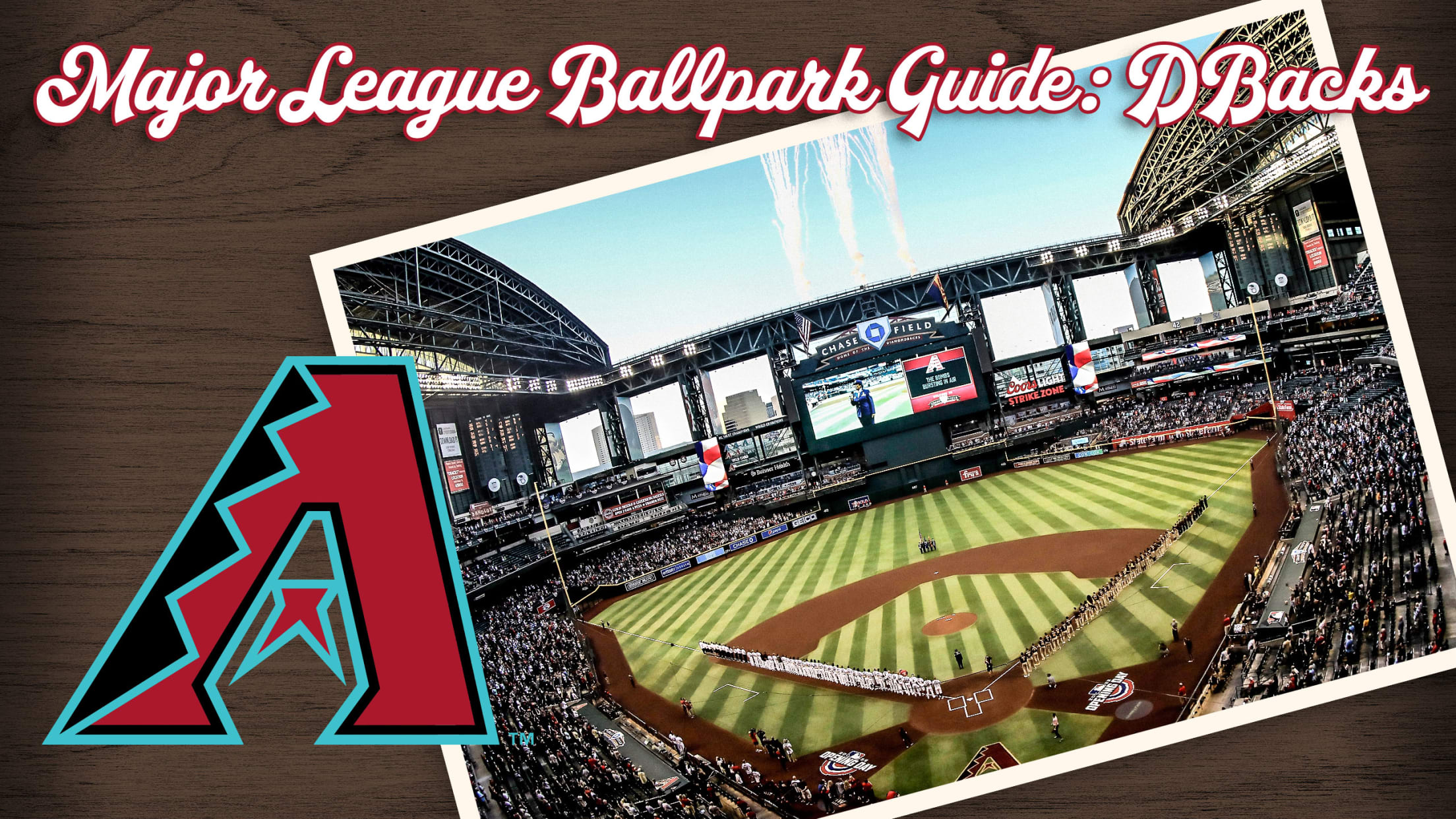
Chase Field, home of the Arizona Diamondbacks

Arizona is home to one of baseball's most unique venues. From it's retractable roof to the pool located beyond the wall in left-center field, Chase Field offers fans a fresh baseball experience.
Arizona Diamondbacks
Established: 1998
National League West
Ballpark: Chase Field (opened 1998)
The Diamondbacks have a rich history despite being, along with the Tampa Bay Rays, the youngest franchise in Major League Baseball.
After longing for a Major League team to call its own, Phoenix was rewarded with an expansion franchise on March 9, 1995, with the team set to begin play in 1998. Jerry Colangelo, who owned the NBA's Phoenix Suns at the time, was the leader of the ownership group, and from the start the goal was to have the D-backs be Arizona's team.
With that in mind, the team was called the Arizona Diamondbacks, and their first Spring Training home was in Tucson, Ariz.
The D-backs had unprecedented early success for an expansion franchise, winning 100 games and the NL West title in their second season, and they became the quickest franchise to win a World Series when they captured the 2001 title in just their fourth season.
Ever since their inception, the Diamondbacks have prided themselves on being pillars in the community, donating over $85 million from 1997-2023, and they bill themselves as the "most fan friendly team in professional sports" for their affordable tickets and treatment of fans.
In September of 2005, the ballpark was renamed Chase Field.
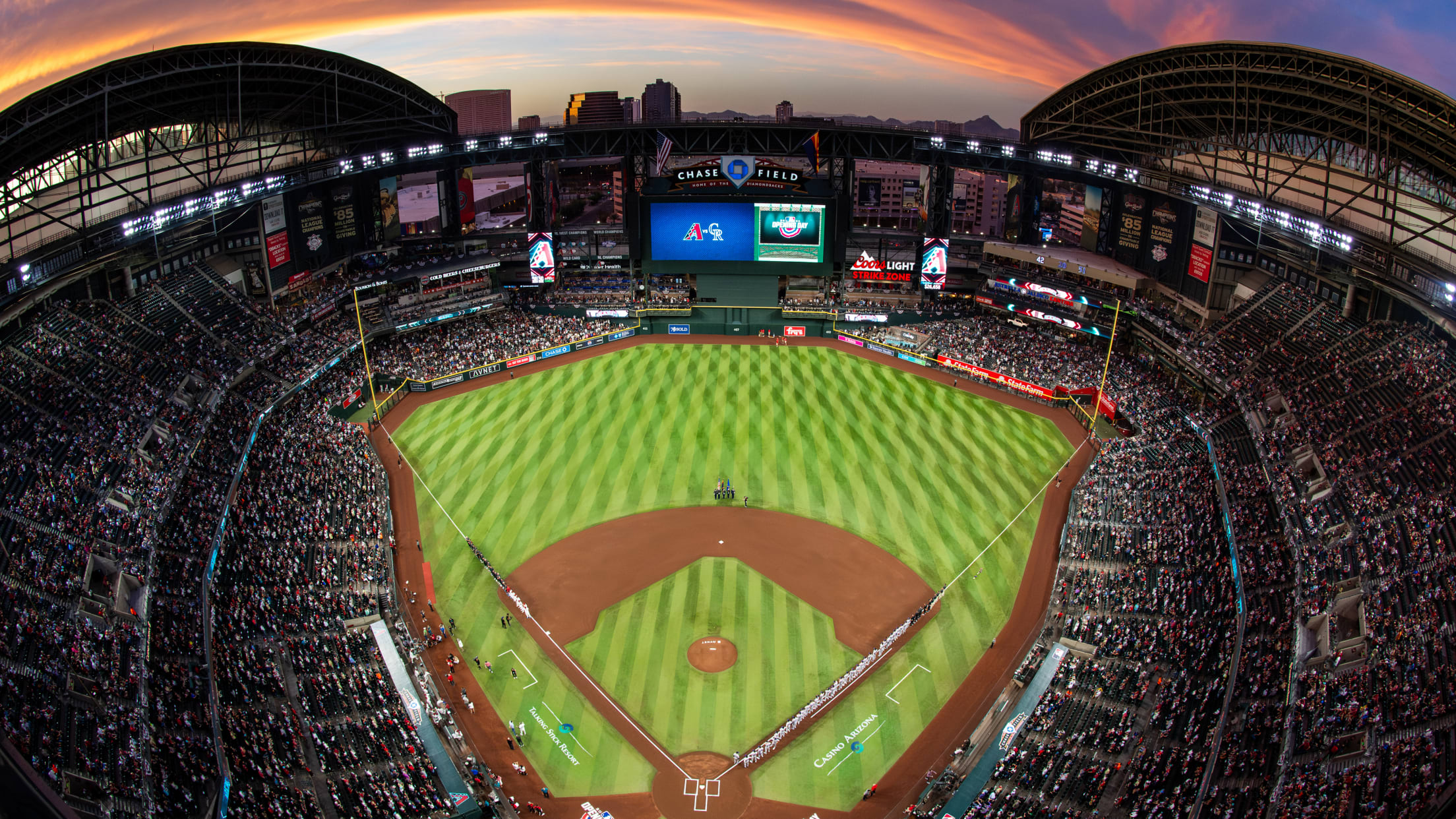
Chase Field
Chase Field location (via Google Maps)
D-backs' schedule
D-backs' roster
401 E. Jefferson St
Phoenix, AZ 85004
Capacity: 48,330
Playing surface: Shaw Sports Turf B1K (originally natural grass)
Dimensions: left-field line, 330 feet; center field, 407 feet; right-field line, 335 feet
Park factors (2024)
100 = league average
Runs: 112 | Homers: 92 | Hits: 109
History
With the searing hot temperatures of the Arizona summers, the Diamondbacks knew that their ballpark would need to have a roof, but they also did not want it to be strictly a dome stadium. To accomplish both of those goals, the D-backs built a ballpark with a retractable roof.
Construction on what was then called Bank One Ballpark began on Nov. 16, 1995, and the site that was chosen was 4th Street and Jefferson, right in the heart of downtown Phoenix, just one block from where the NBA Phoenix Suns played at then-America West Arena.
It took 28 months and $354 million to build the ballpark with a roof that reached 255 feet at its highest point and 185 feet at its lowest point. The roof contains nine million pounds of structural steel and operates with a similar technology as a draw bridge opening from the middle, so the two segments of the roof open or close either in unison or independently.
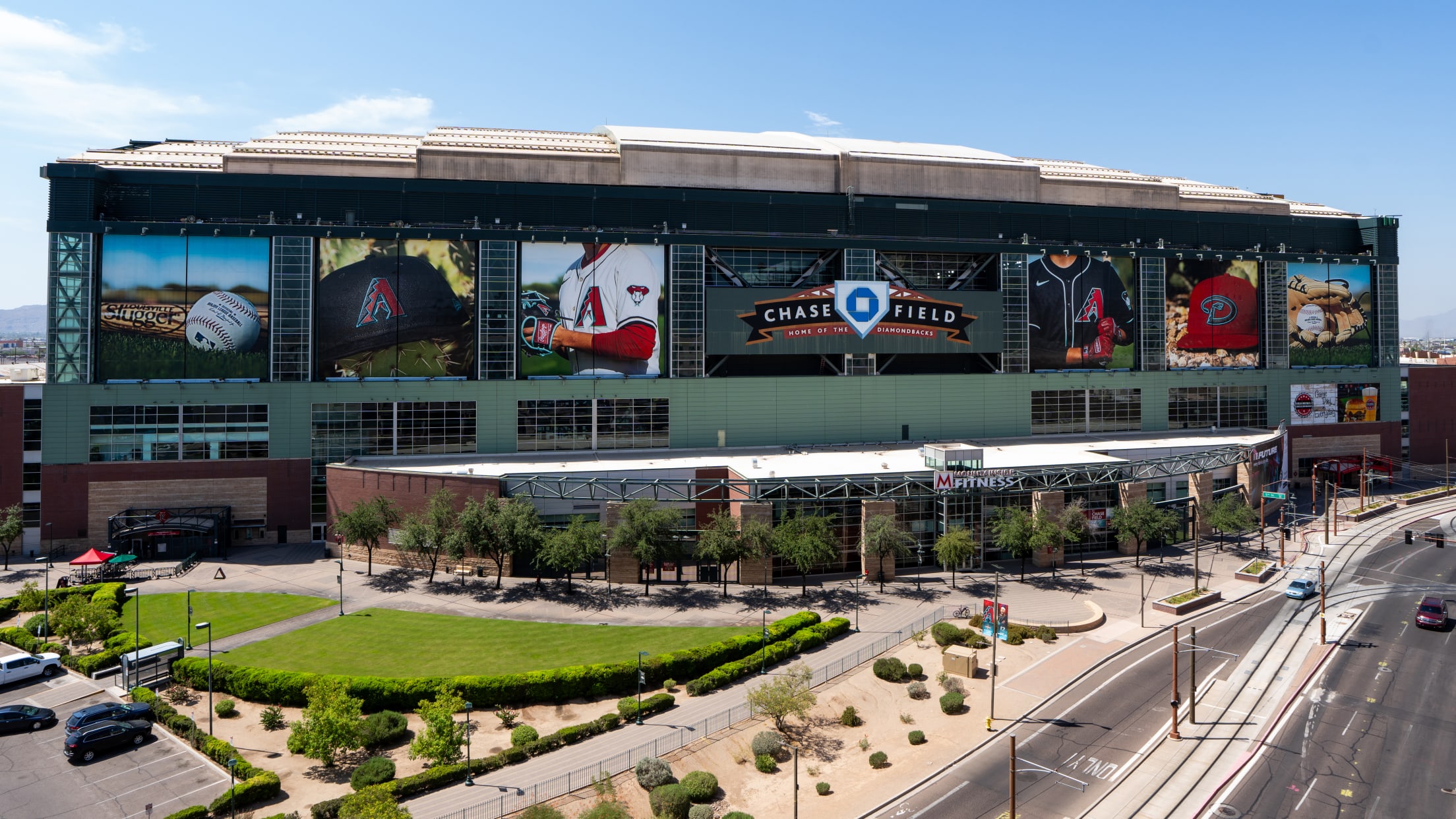
At the time it was built, it was the only ballpark to be built with a roof and natural grass. In order to make it work, the team used a unique strain of grass that required less sunlight. After years of trying different types of grass, the Diamondbacks switched to B1K turf made by Shaw Sports Turf. The surface features a hybrid polyethylene fiber system.
Another unique feature of the ballpark when it opened was the presence of a pool just beyond the right-center field fence. It is sold as a suite on a game-by-game basis and the novelty was a huge hit with fans who wanted to stay cool in the water while watching the game. The pool, which also includes a hot tub, sits 415 feet away from home plate and the first home run ball to land in the pool on a fly was hit by the Cubs' Mark Grace on May 12, 1998.
The Northwinds "district cooling system" is used to air condition the ballpark. The system was designed in 2001 to cool down the highly populated facilities in downtown Phoenix.
Parking is plentiful around the stadium both in the form of parking garages and street lots. The ballpark is also a stop on the Valley Metro Rail system, which runs 365 days a year at 15-20 minute intervals. The Chase Field stop is located on the corner of 4th St. and Jefferson, a half-block from the main entrance to the ballpark.
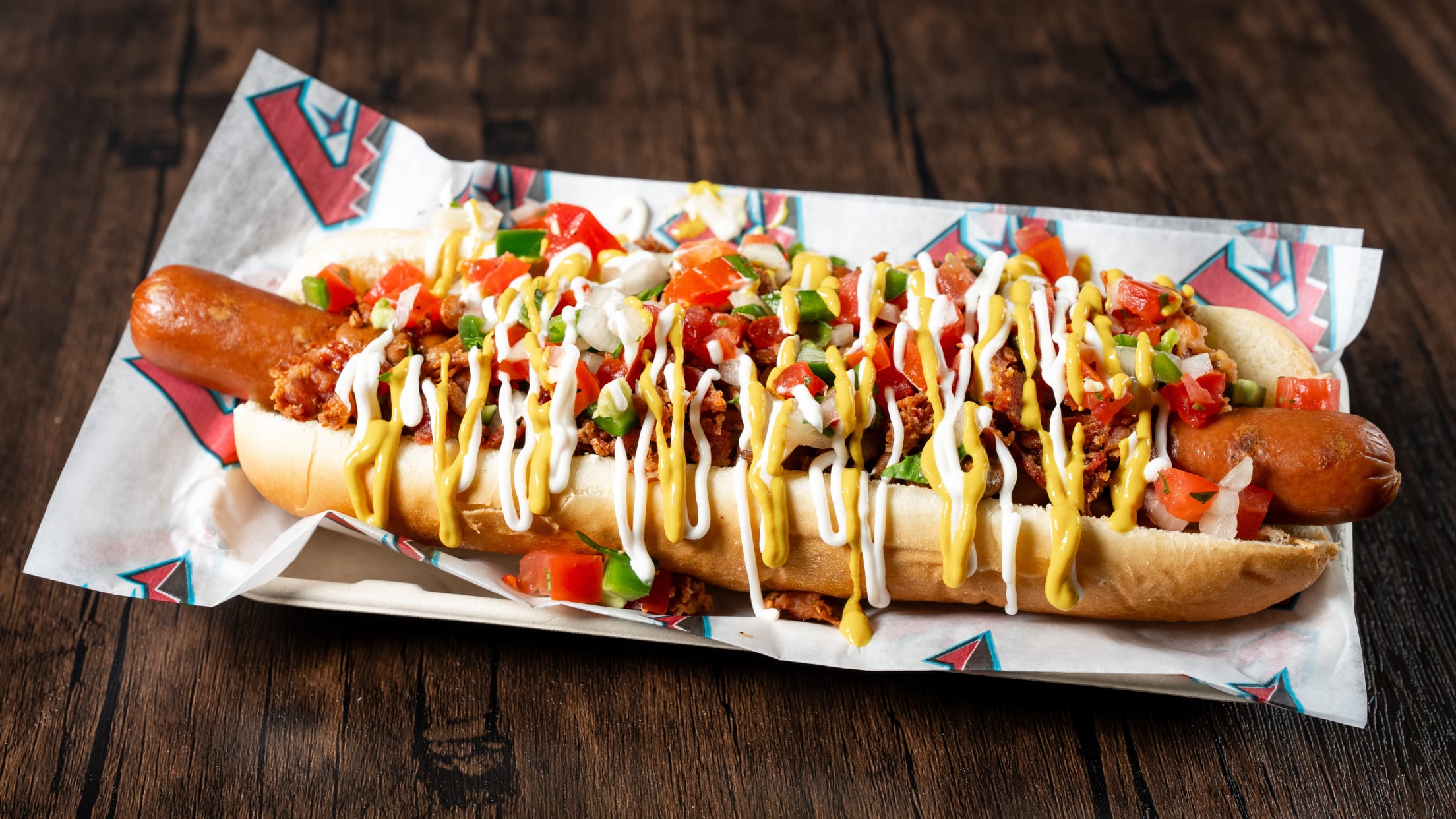
Concessions
The Diamondbacks pride themselves on their unique dining options and this year is no different, with several items added to the menu, including the Grand Slamwich. It is a footlong baguette half filled with breaded chicken strips, tomato sauce, parmesan and a little pesto, and the other half has Italian meatballs, tomato sauce and parmesan. The sandwich comes with kettle chips and is definitely enough for more than one person. You can find it at section 120 at the Jefferson Street Deli. There is also the Filthy Mac Fries (section 130 at Taste of Chase), which has fries, white cheddar mac and cheese, pork belly, barbeque sauce, coleslaw and crispy onions. There’s a Giant Loaded BBQ Chicken Potato (section 114 at BBQ Alley), the Carne Asada Nacho Helmet (section 318 at 131 Nacho Cart), the Batflip Burger (section 118) and many more new items.
Of course, the standard ballpark fare as well as vegan options are also available. Cactus Corn is a great place to go for the freshest popcorn, caramel corn and cheese corn, while Hungry Hill, which has been a staple since the ballpark opened, has outstanding meatball sandwiches and Italian beef.
Mascots
The Diamondbacks did not have a mascot in their first two-plus years of playing. There were issues with trying to come up with a snake mascot, because snakes don't have legs and you can't very well have a mascot moving around the ballpark with no legs.
Second baseman Jay Bell's 6-year-old son, Brantley, suggested to his dad in the summer of 2000 that since the team played at Bank One Ballpark, which was often referred to as The BOB, why didn't they have a mascot that was a BOBcat.
Bell took his son's idea to team president Rich Dozer, who liked the idea and on June 23, 2000, D. Baxter the Bobcat was born.
Local attractions
If you're coming to Phoenix in the summer, it's going to be hot, hot, hot. But if you get out early enough, there are tons of hiking trails like Camelback Mountain, Papago Park and Piestewa Peak. If you prefer to stay indoors, there are a number of excellent museums to tour including Arizona Science Center, Phoenix Art Museum and, if you have kids, the Children's Museum of Phoenix is always a good option.
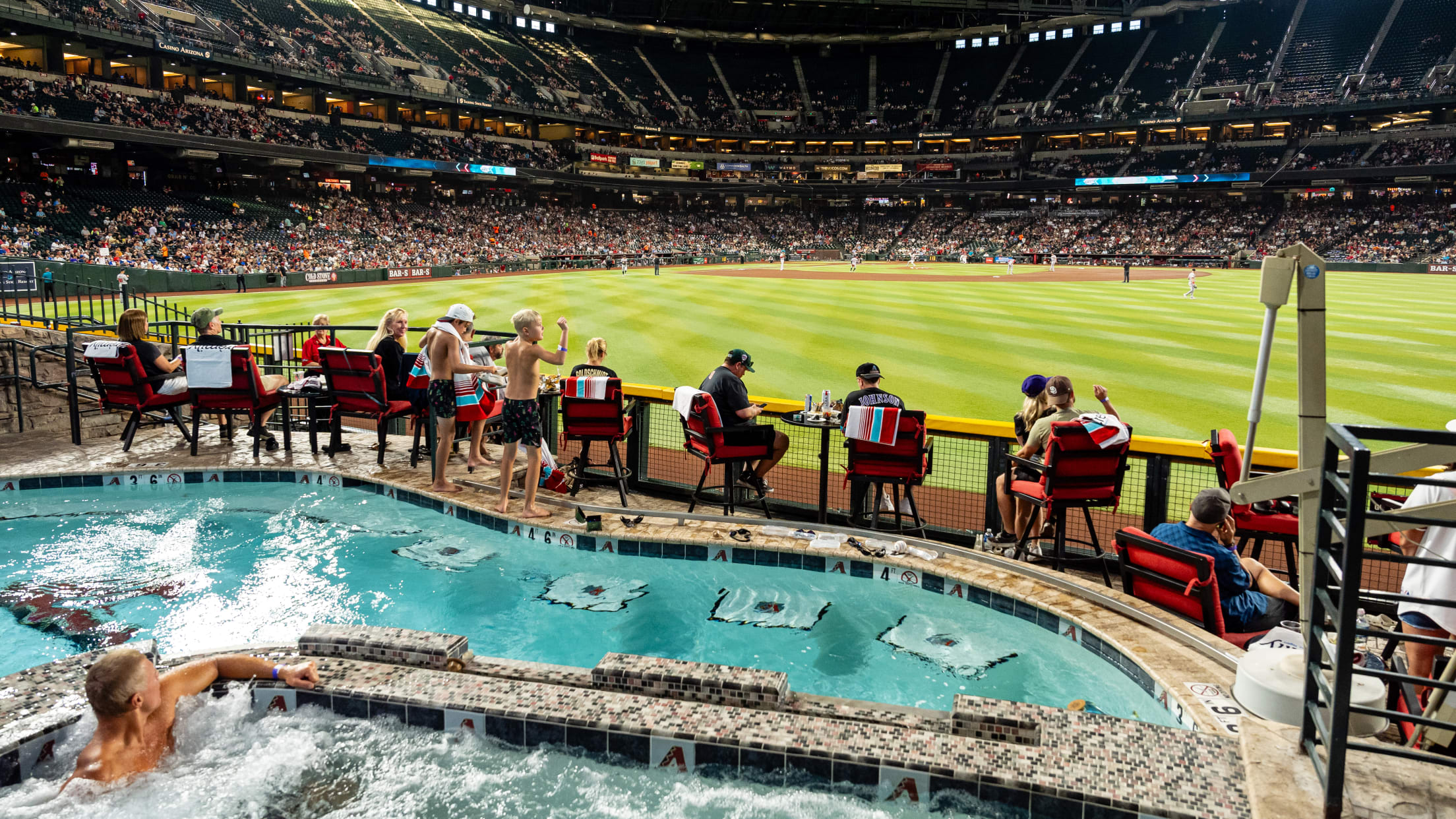
Food and drink
Thanks to the Diamondbacks and Suns being located there, downtown Phoenix has come a long way over the years and has some excellent dining options. Pizzeria Bianco, located within walking distance of the ballpark, is legendary for its pizza, and Matt's Big Breakfast is also a local favorite.
Futuro Coffee is a favorite of visiting baseball writers, and be sure to take time to walk through the food market next door. Ingo's Tasty Food serves breakfast and is a casual place for dinner.
Just outside the ballpark is Guy Fieri's DTPHX Kitchen and Bar, which also houses Caesars Sports Book.
If you're in the ballpark and want food make sure you check out "Taste of Chase" which features unique menu items from the city of that night's visiting team. The Hungry Hill stand has outstanding meatball sandwiches, and if you're looking for a snack, don't miss Cactus Corn, which has locations in both the upper and lower decks.